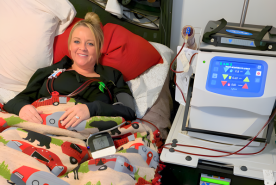Kidney Topics
Nutrition and Kidney Disease, Stages 1-5 (Not on Dialysis)
Good nutrition helps people with kidney disease stay healthy. If your kidneys are not working so well, some changes in the diet help you feel better.
Diseases and conditions,
Diet and nutrition,
Kidney diseases and conditions,
Early stage kidney disease









